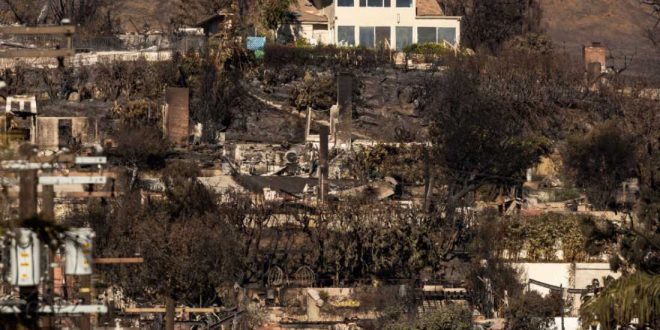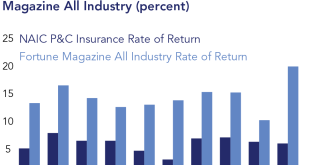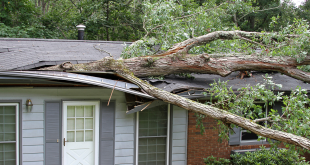Homeowners across the nation are increasingly taking proactive steps to fortify their properties against natural disasters, and in doing so, they’re discovering a valuable side benefit: significant savings on their homeowner’s insurance premiums. By investing in disaster-resistant upgrades, homeowners are not only protecting their homes and families but also demonstrating to insurers a reduced risk profile, leading to lower rates and a more secure financial future. This article explores the specific upgrades that are yielding the most significant insurance discounts and how homeowners can effectively navigate the process.
Understanding the Connection Between Disaster Resistance and Insurance Premiums
Ever wonder why some of your neighbors seem to pay less for their homeowner’s insurance? It might not just be about location, location, location! A big part of it boils down to how well-protected their homes are against, well, you guessed it, disaster. Insurance companies aren’t exactly in the business of losing money, are they? So, the less likely your home is to be damaged by a storm, fire, or other disaster, the less you’ll likely pay for coverage. It’s all about risk assessment, plain and simple. Makes sense, right?
Why Insurance Companies Offer Discounts
Think about it from their perspective. An insurance company that covers a neighborhood full of homes built like fortresses is going to face fewer claims than one covering a street of flimsy structures. Offering discounts for disaster-resistant features is their way of encouraging you to invest in those fortifications. It’s a win-win! You protect your home, and they reduce their potential payout. Plus, let’s be honest, they probably sleep better at night, too. Less stress, you know?
Assessing Your Home’s Vulnerability
Okay, so how do you even begin to figure out where your home stands in the disaster-resistance game? Well, start by thinking about the most likely threats in your area. Are you in hurricane alley? Tornado territory? Earthquake country? Once you’ve identified the potential villains, you can start to pinpoint your home’s weak spots. Maybe your roof is old, or those windows look a little too fragile. An honest assessment is the first step. You can even hire a professional inspector to get a comprehensive report – sometimes, a fresh pair of eyes can catch things you might have missed.
Key Disaster-Resistant Home Upgrades for Insurance Savings
Alright, let’s get down to brass tacks. What specific upgrades can actually put money back in your pocket through lower insurance premiums? Here are a few of the big hitters:
Reinforced Roofing
Your roof is your home’s first line of defense against the elements. So, upgrading to a more durable roofing material, like impact-resistant shingles or a metal roof, can make a huge difference. Not only will it better withstand high winds, hail, and heavy rain, but it’ll also send a clear message to your insurer that you’re serious about protection. I mean, who wouldn’t want a roof that can laugh in the face of a hailstorm?
Hurricane-Resistant Windows and Doors
Those flimsy old windows and doors? They’re practically begging for trouble in a hurricane. Replacing them with hurricane-resistant versions – think impact-resistant glass and reinforced frames – can significantly reduce the risk of wind and water damage. Plus, they can also help to deter burglars, so it’s like a two-for-one deal. Safety and security all wrapped into one neat package.
Strengthening the Foundation
A strong foundation is, well, fundamental to the stability of your home. Making sure your foundation is properly reinforced, especially if you live in an earthquake-prone area, can prevent catastrophic damage. This might involve adding anchor bolts, reinforcing concrete walls, or even undergoing a complete foundation overhaul. It’s a big job, for sure, but the peace of mind (and the insurance savings) can be well worth it. Think of it as giving your house a solid backbone.
Elevating Coastal Homes
If you’re living the coastal dream, you also have to contend with the reality of flooding. Elevating your home above the base flood elevation can drastically reduce the risk of water damage and, in turn, lower your insurance premiums. It’s like giving your home a pair of stilts to stand tall against the rising tides. Not the cheapest project, granted, but definitely one to consider if you want to protect your investment.
Installing a Backup Generator
Power outages are more than just an inconvenience; they can lead to frozen pipes, spoiled food, and a general sense of chaos. Installing a backup generator can keep the lights on and the appliances running during an outage, minimizing potential damage and keeping your family comfortable. Plus, some insurers offer discounts for having a generator, because it reduces the risk of claims related to power outages. I mean, who wants to deal with a fridge full of spoiled food? Nobody, that’s who.
Fire-Resistant Landscaping
Okay, this one might sound a little unusual, but hear me out. Creating a fire-resistant zone around your home by using fire-resistant plants, removing dry brush, and keeping trees trimmed can significantly reduce the risk of wildfire damage. It’s like creating a natural barrier between your home and the flames. And yes, some insurance companies will reward you for being proactive about fire safety. It’s all about creating a defensible space.
Documenting and Presenting Your Upgrades to Your Insurer
So, you’ve invested in these upgrades, now what? Don’t just assume your insurance company will automatically know about them. You need to show them the proof!
Gathering Evidence: Photos, Receipts, and Inspections
Before and after photos are your best friend here. Keep detailed records of all the work you’ve done, including receipts for materials and labor. If you had any inspections done, make sure to keep those reports as well. The more evidence you can provide, the stronger your case for a lower premium. It’s like building a legal case for your home’s awesomeness.
Communicating with Your Insurance Agent
Don’t be shy! Reach out to your insurance agent and let them know about the upgrades you’ve made. Provide them with all the documentation you’ve gathered and ask them to reassess your policy. A good agent will work with you to find all the available discounts. And hey, a little friendly conversation never hurts, right?
Consider a Home Inspection After Upgrades
After completing significant upgrades, consider getting a new home inspection. A professional inspector can verify the improvements and provide you with an updated report that you can then share with your insurance company. This can be particularly helpful if you’ve made structural changes or installed new safety features.
Navigating Insurance Policy Changes After Upgrades
Alright, you’ve done the work, presented the evidence, now it’s time to navigate the potential changes to your policy.
Reviewing Your Coverage and Deductibles
Once your insurance company has reassessed your policy, take a close look at the details. Make sure your coverage is still adequate and that your deductibles are set at a level you’re comfortable with. Sometimes, a lower premium might mean a higher deductible, so it’s important to weigh the pros and cons.
Negotiating a Lower Premium
Don’t be afraid to negotiate! If you’re not happy with the new premium, politely push back and ask for a further reduction. Remind them of all the investments you’ve made to protect your home. The worst they can say is no, right?
Shopping Around for Better Rates
Even if your current insurer offers a discount, it’s always a good idea to shop around and compare rates from other companies. You might be surprised to find that another insurer offers even better rates for your newly upgraded home. Remember, loyalty doesn’t always pay in the insurance world.
Long-Term Benefits Beyond Insurance Savings
Okay, so saving money on insurance is great, but the benefits of disaster-resistant home upgrades extend far beyond that.
Increased Home Value
Let’s be real, a home that’s built to withstand anything is more valuable. Potential buyers will appreciate the peace of mind that comes with knowing the property is well-protected. It’s a selling point that can truly set your home apart from the competition.
Peace of Mind During Severe Weather
This is probably the most valuable benefit of all. Knowing that your home is well-protected against disasters can bring a sense of calm and security during severe weather events. You can focus on keeping your family safe without constantly worrying about the structural integrity of your home. That’s priceless, right?
Reduced Maintenance Costs
Durable, disaster-resistant materials often require less maintenance than their traditional counterparts. This means fewer repairs, less hassle, and more money in your pocket in the long run. It’s like investing in a home that takes care of itself, at least a little bit.
Investing in disaster-resistant home upgrades is a win-win situation for homeowners. Not only does it provide increased safety and security during severe weather events, but it also unlocks opportunities for significant savings on insurance premiums. By taking proactive steps to fortify their properties, homeowners can protect their families, their investments, and their financial well-being. So, what are you waiting for? Maybe it’s time to start thinking about reinforcing that roof!
 seeme
seeme




